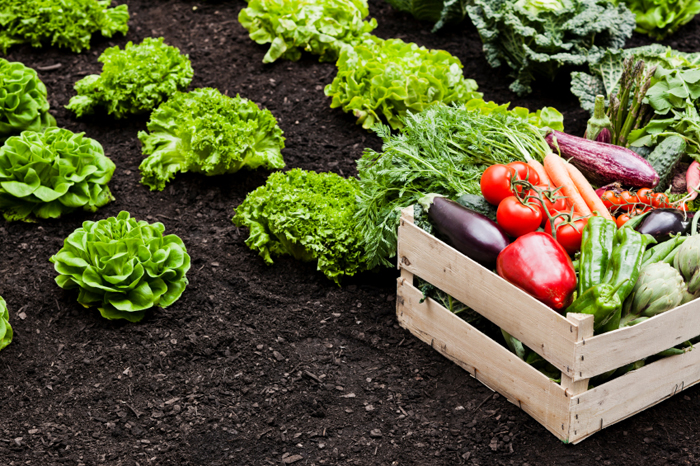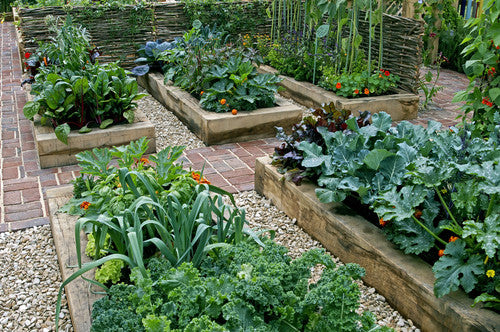Learn Just How to Cultivate a Flourishing Horticulture Environment for All Ability Degrees
Developing a flourishing yard is a complex venture that can be welcomed by people at any kind of skill level. By examining vital elements such as dirt health, ideal plant choice, and seasonal treatment routines, one can establish a lasting gardening practice that generates satisfying outcomes.
Recognizing Your Garden Room
In the realm of horticulture, understanding your garden area is critical to cultivating a prospering landscape (Homestead Gardening). The very first action in this venture involves evaluating the details qualities of your story. Variables such as soil make-up, sunshine exposure, and drain play vital functions in figuring out the viability of your yard for numerous sorts of plants
Begin by performing a dirt examination to examine pH levels and nutrient material, which will certainly notify any kind of necessary amendments. Furthermore, observe exactly how much sunlight your space gets throughout the day. Different plants have differing light needs; some prosper completely sunlight, while others favor partial or full shade.

Lastly, assess the offered space and plan accordingly. This includes taking into consideration plant heights and spread out to ensure adequate room for development without overcrowding. By obtaining a comprehensive understanding of your garden room, you set the foundation for a successful gardening experience.
Selecting the Right Plants
Choosing the right plants for your yard needs mindful factor to consider of different aspects, consisting of environment, soil problems, and personal preferences. Start by assessing your neighborhood environment, as certain plants flourish specifically temperature level varieties and weather patterns. Tropical plants may not survive in colder regions, while sturdy perennials can withstand extreme winter seasons.

Consider your individual choices, consisting of aesthetic appeal and maintenance levels. Choose whether you favor dynamic blossoms, rich vegetation, or edible plants. Additionally, consider the time and initiative you agree to spend in plant treatment, as some ranges demand more attention than others.
Lastly, consider the yard's layout and light direct exposure. Sunshine patterns throughout the day will affect your selections-- some plants call for full sunlight, while others flourish in color. By attentively analyzing these elements, you can create a harmonious and efficient garden tailored to your atmosphere and tastes.
Crucial Horticulture Tools
A well-appointed gardener can dramatically improve their horticulture experience and results. Vital horticulture devices are basic to cultivating an effective yard, no matter skill degree. First, a tough spade is invaluable for excavating and transforming dirt, while a trowel enables precise planting and hair transplanting of smaller sized plants.
Trimming shears are essential for maintaining plant health and wellness by eliminating disordered or dead branches, promoting much better air flow and growth. Furthermore, a hand rake serves for getting rid of particles and freshening the soil, making certain optimum problems for plant roots.
Gardening handwear covers protect hands from chemicals, sores, and thorns, making them a vital accessory. A watering can or hose with an adjustable nozzle makes sure that plants obtain ample wetness without overwatering.
Last but not least, think about spending in a durable wheelbarrow for transferring soil, plants, and tools around the garden effectively. By putting together a quality toolkit that includes these important great post to read items, gardeners can take on different jobs with confidence and convenience, leading the way for a thriving gardening environment. Remember, the right tools not just improve performance but also boost the total pleasure of the horticulture process.
Dirt Preparation and Upkeep
Quality dirt is the structure of a successful garden, making appropriate preparation and upkeep vital for healthy plant development. The initial action in soil prep work involves testing its pH and nutrient degrees. This can be accomplished through soil testing sets readily available at gardening facilities or through specialist services. Based upon the examination results, changes can be made to optimize dirt conditions for specific plant requirements.
Integrating organic matter, such as article source compost or well-rotted manure, is necessary for enhancing dirt framework and fertility. This not just boosts nutrition accessibility however additionally promotes advantageous microbial activity. Additionally, appropriate drainage is vital; hefty clay soils might require the enhancement of sand or perlite to enhance oygenation.
Normal maintenance of soil health and wellness includes mulching, which saves dampness and reduces weeds. Revolving plants each year helps avoid nutrient exhaustion and minimizes bug and illness risks. It is also important to prevent over-tilling, which can interfere with soil structure and damage useful organisms.
Ultimately, a constant dedication to dirt preparation and upkeep will lead to a growing yard, making certain that plants receive the vital nutrients they require for robust development and productivity.
Seasonal Care and Monitoring

In spring, concentrate on planting new seeds and seed startings, while likewise performing dirt examinations to amend nutrient deficiencies. Frequently check for pests and illness, as these can proliferate with the warming weather. Summertime demands constant watering and mulching to preserve dampness, in addition to pruning for much better air circulation.
As autumn methods, it's time to prepare the yard for dormancy. This consists of collecting plants, cleansing up debris, and applying a layer of compost to protect plant origins from frost. Consider growing cover crops to enrich the dirt during the winter season.
Examine structures like greenhouses for damage and make sure proper insulation for delicate plants. By adapting your horticulture practices to the seasonal cycles, you can foster a flourishing atmosphere that supports plant health and wellness year-round.
Final Thought
In final thought, growing an effective yard requires a thorough understanding of necessary concepts such as dirt composition, sunshine direct exposure, and appropriate plant option. Routine seasonal care and monitoring practices additionally enhance plant health and performance.
Choosing the right plants for your yard calls for cautious factor to consider of different elements, including climate, dirt conditions, and personal choices. Conduct a dirt test to establish pH degrees and nutrition material, which will certainly direct you in selecting plants that will certainly grow in your yard.Finally, take into consideration spending in a durable wheelbarrow for transferring dirt, plants, and tools around the yard effectively.Quality dirt is the foundation of a successful garden, making appropriate prep work and upkeep essential for healthy and balanced plant development. Homestead Gardening.In final thought, growing an effective garden needs a thorough understanding of necessary concepts such as soil composition, sunlight direct exposure, and suitable plant choice